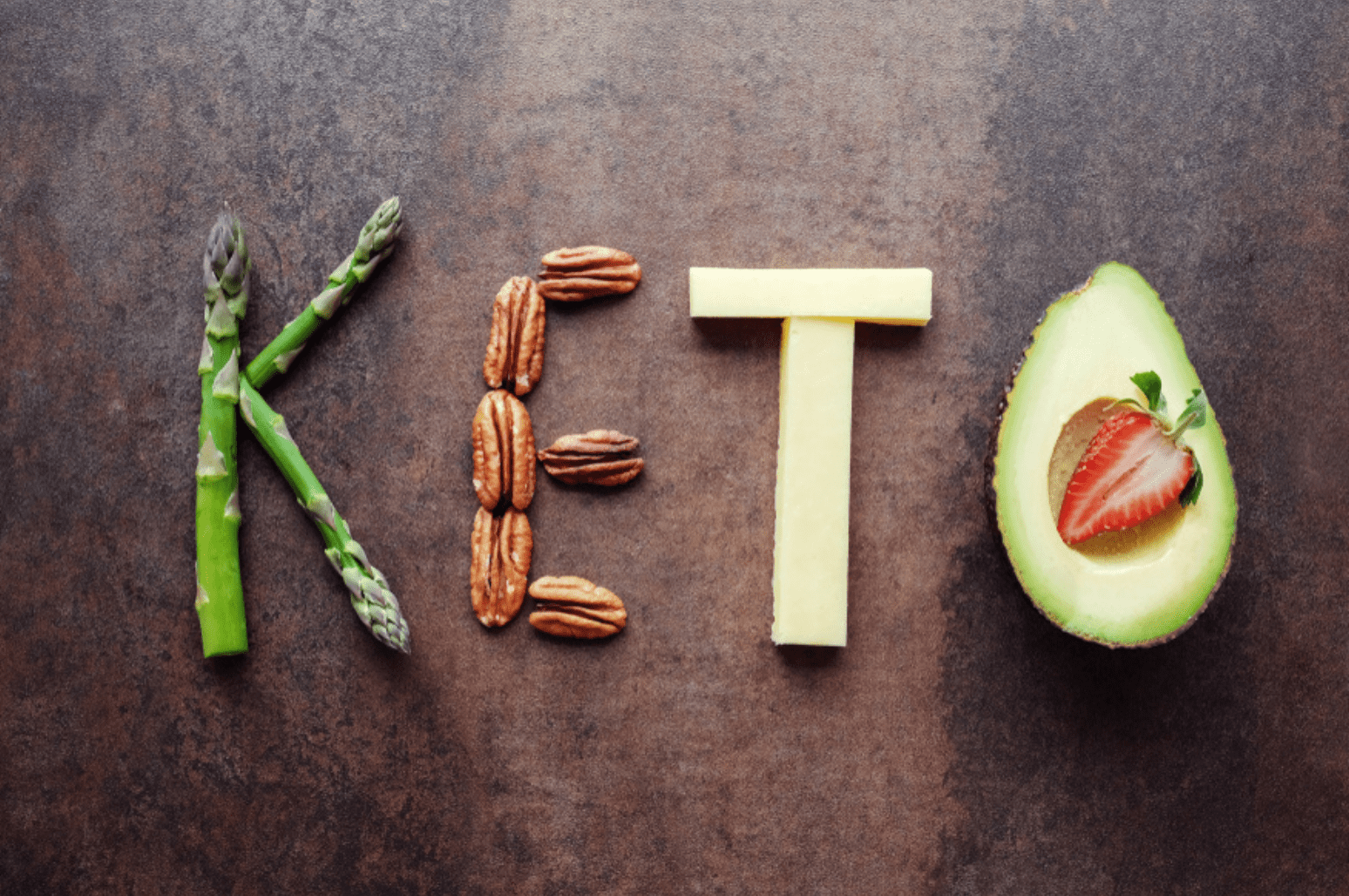
You might have heard about tapioca through the keto grapevine. So, is it keto-friendly? What is it used for? Where does it come from? What’s the nutritional value of tapioca fiber? Read on for some answers and helpful info on this interesting food derived from the cassava plant.
What is Tapioca Fiber?
Tapioca refers to a starch that’s harvested from the cassava root — a tuber that’s native to South America. The cassava root is easy to grow and it’s a dietary staple in certain places in Asia, South America, and Africa. Tapioca has limited nutritional value, however, it’s affordable and has a variety of uses.
Tapioca is typically a dried product and sold as a white flour, flakes, or pearls. It’s a popular gluten-free and grain-free alternative and many people use it for cooking and baking and for autoimmune and paleo type diets [1] [2].
Tapioca flour isn’t cassava flour. Cassava flour simply refers to the ground cassava root whereas tapioca is the starchy liquid extracted from ground cassava root.
Many people are intolerant or allergic to wheat, gluten, and grains. Tapioca definitely isn’t a superfood, but it is suitable for restricted gluten and grain-free diets. Some people also mix it with other flours, such as almond or coconut flour, to increase the number of nutrients. So, what about tapioca fiber on keto? [3] [4] [5] [6] Tapioca is often used:
Tapioca is often used:
- For gluten and grain-free bread
- For puddings and desserts
- As a thickener for gravies, sauces, and soups
- As a binding agent for burgers, nuggets, and dough
The process of making tapioca varies, but it always involves squeezing the starchy liquid out of ground cassava root. The water is then allowed to evaporate, leaving behind a fine tapioca powder that’s processed into the preferred form, such as pearls or flakes. Due to the dehydration process, the sticks, pearls, or flakes must be boiled or soaked prior to consumption. During boiling or soaking they might double in size and swell.
Bubble tea or Boba tea — a popular cold, sweet-tasting Asian beverage is made using cooked tapioca pearls. Bubble tea is typically a brewed tea with tapioca pearls, milk, syrup, and ice cubes. It’s often made using black tapioca pearls, which are the white pearls with brown sugar blended into them. Unfortunately, this means that many bubble teas are sugar-laden and not suitable for the ketogenic diet. You could try making your own keto-friendly bubble tea at home.
Is Tapioca Fiber Keto-Friendly?
When you’re buying a keto-friendly product, you might see tapioca fiber on the label. If you see soluble tapioca fiber on a label, that refers to either IMO (isomaltooligosaccharides) or a resistant dextrin.
Soluble tapioca fiber that is a resistant dextrin is a keto-compliant sweetener that’s used in numerous keto products. It’s derived from non-GMO tapioca starch that’s broken down through an enzymatic-based process. The result is a keto-friendly fiber that won’t kick you out of ketosis or impact your blood sugar.
Tapioca fiber is a sweet, natural binder that’s a great option for the ketogenic diet. It contains resistant starch that’s resistant to digestion. Resistant starch has been associated with numerous health benefits and it feeds the friendly bacteria in the gut, reducing the number of harmful bacteria and reducing inflammation [7] [8] [9] [10]
The resistant starch might also improve insulin and glucose metabolism, increase satiety, and lower blood sugar levels [11] [12] [13] [14]
Some food manufacturers are falsely claiming that they use soluble tapioca fiber in a keto-friendly product, but they’re using isomaltooligosaccharides.  Isomaltooligosaccharides (IMOs) refers to a syrup sourced from starch (usually corn or potatoes). IMOs are high in a type of sugar called maltose and they taste sweet, but they’re not a true fiber. IMOs are made-up of short-chain carbohydrates and studies show they impact blood glucose, so they aren’t a good choice for keto. IMOs don’t resist digestion completely in the small intestine, so fewer polymers reach the colon for fermentation by the bacteria in your gut. This means that some glucose might be free to cause blood sugar spikes in certain individuals.
Isomaltooligosaccharides (IMOs) refers to a syrup sourced from starch (usually corn or potatoes). IMOs are high in a type of sugar called maltose and they taste sweet, but they’re not a true fiber. IMOs are made-up of short-chain carbohydrates and studies show they impact blood glucose, so they aren’t a good choice for keto. IMOs don’t resist digestion completely in the small intestine, so fewer polymers reach the colon for fermentation by the bacteria in your gut. This means that some glucose might be free to cause blood sugar spikes in certain individuals.
Eating a product that claims to be keto-friendly, but contains IMOs might knock you out of ketosis, so it’s something to be aware of, particularly if you have long-term health or weight loss goals on keto [15].
Tapioca and corn are starch-starting sources that are often used to produce IMOs and soluble tapioca fiber. Despite using the same starch to start with, tapioca fiber and IMOs have a completely different effect on your body. One can be included on the ketogenic diet and the other can’t. For more on the difference between IMOs and soluble dextrins like tapioca fiber, check out this detailed article that dives into the science and the issues with food labeling to help you make better keto-compliant choices.
The good news is that in the U.S., from January 1st 2020 for larger companies and from January 1st 2021 for smaller companies, IMO polymers must be correctly labeled as a caloric sugar with 4 calories per gram. Supplement companies have now also begun changing their labels in 2020.
Go Ketogenic-Certified!
Going with ketogenic-certified products is one way to ensure you’re getting a product that is legitimately keto-friendly. Look for the ketogenic-certified logo on the packaging. Keto-certified products have been tested for their metabolic response.
Other names for soluble tapioca fiber include:
- Resistant dextrin (RD)
- FiberSMART®
- Tapioca resistant dextrin
Do You Use Tapioca Fiber on Keto?
Share your favorite recipes and ways to use tapioca fiber on the ketogenic diet!
References
Kolapo, A. L., & Sanni, M. O. (2009). A comparative evaluation of the macronutrient and micronutrient profiles of soybean-fortified gari and tapioca.Food and Nutrition Bulletin, 30(1), 90-94.
Okezie, B. O., & Kosikowski, F. V. (1982). Cassava as food. Critical Reviews in Food Science & Nutrition, 17(3), 259-275.
Zuidmeer, L., Goldhahn, K., Rona, R. J., Gislason, D., Madsen, C., Summers, C., Sodergren, E., Dahlstrom, J., Lindner, T., Sigurdardottir, S. T., McBride, D., & Keil, T. (2008). The prevalence of plant food allergies: A systematic Review.Journal of Allergy and Clinical Immunology, 121(5), 1210-1218.
Molina-Infante, J., Santolaria, S., Sanders, D. S., & Fernandez-Banares, F. (2015).Systematic review: Nonceliac gluten sensitivity.Alimentary Pharmacology & Therapeutics, 41(9), 807-820.
Rubio-Tapia, A., Ludvigsson, J. F., Brantner, T. L., Murray, J. A., & Everhart, J. E. (2012). The prevalence of celiac disease in the United States. American Journal of Gastroenterology, 107(10), 1538-1544.
Gibson, P. R., & Shepherd, S. J. (2010). Evidence-based dietary management of functional gastrointestinal symptoms: The FODMAP approach.Journal of Gastroenterology and Hepatology, 25(2), 252-258.
Wronkowska, M., Soral-Smietana, M., & Biedrzycka, E. (2008). Utilization of resistant starch of native tapioca, corn, and waxy corn starches and their retrograded preparations by bifidobacterium. International Journal of Food Sciences & Nutrition, 59(1), 80-87.
Topping, D. L., Fukushima, M., & Bird, A. R. (2003). Resistant starch as a prebiotic and symbiotic: State of the art. The Proceedings of the Nutrition Society, 62(1), 171-176.
Donohoe, D. R., Garge, N., Zhang, X., Sun, W., O’Connell, T. M., Bunger, M. K., & Bultman, S. J. (2011). The microbiome and butyrate regulate energy metabolism and autophagy in the mammalian colon. Cell Metabolism, 13(5), 517-526.
Birt, D. F., Boylston, T., Hendrich, S., Jane, J., Hollis, J., Li, L., McClelland, J., Moore, S., Phillips, G. J., Rowling, M., Schalinske, K., Scott, M. P., & Whitley, E. M. (2013). Resistant starch: Promise for improving human health. Advances in Nutrition, 4(6), 587-601.
Raben, A., Tagliabue, A., Christensen, N. J., Madsen, J., Holst, J. J., & Astrup, A. (1994). Resistant starch: The effect on postprandial glycemia, hormonal response, and satiety. American Journal of Clinical Nutrition, 60(4), 544-551.
Kato, R., Tachibe, M., Sugano, S., Kishida, T., & Ebihara, K. (2009). High-hydroxypropylated tapioca starch improves insulin resistance in genetically diabetic KKAy mice. Journal of Food Science, 74(3), H89-96.
Robertson, M. D., Bickerton, A. S., Dennis, A. L., Vidal, H., & Frayn, K. N. (2005). Insulin-sensitizing effects of dietary resistant starch and effects on skeletal muscle and adipose tissue metabolism. American Journal of Clinical Nutrition, 82(3), 559-567.
Bodinham, C. L., Frost, G. S., & Robertson, M. D. (2010). Acute ingestion of resistant starch reduces food intake in healthy adults. British Journal of Nutrition, 103(6), 917-922.
Lowery, R. P., Wilson, J. M., Barniger, A., Sharp, M. H., Irvin, C., Stefan, M., Wallace, W. A., Wilson, G. J., Roberts, M. D., & Wagner, R. (2018). The effects of soluble corn fiber and isomaltooligosaccharides on blood glucose, insulin, digestion, and fermentation in healthy young males and females.Journal of Insulin Resistance, 3(1),









